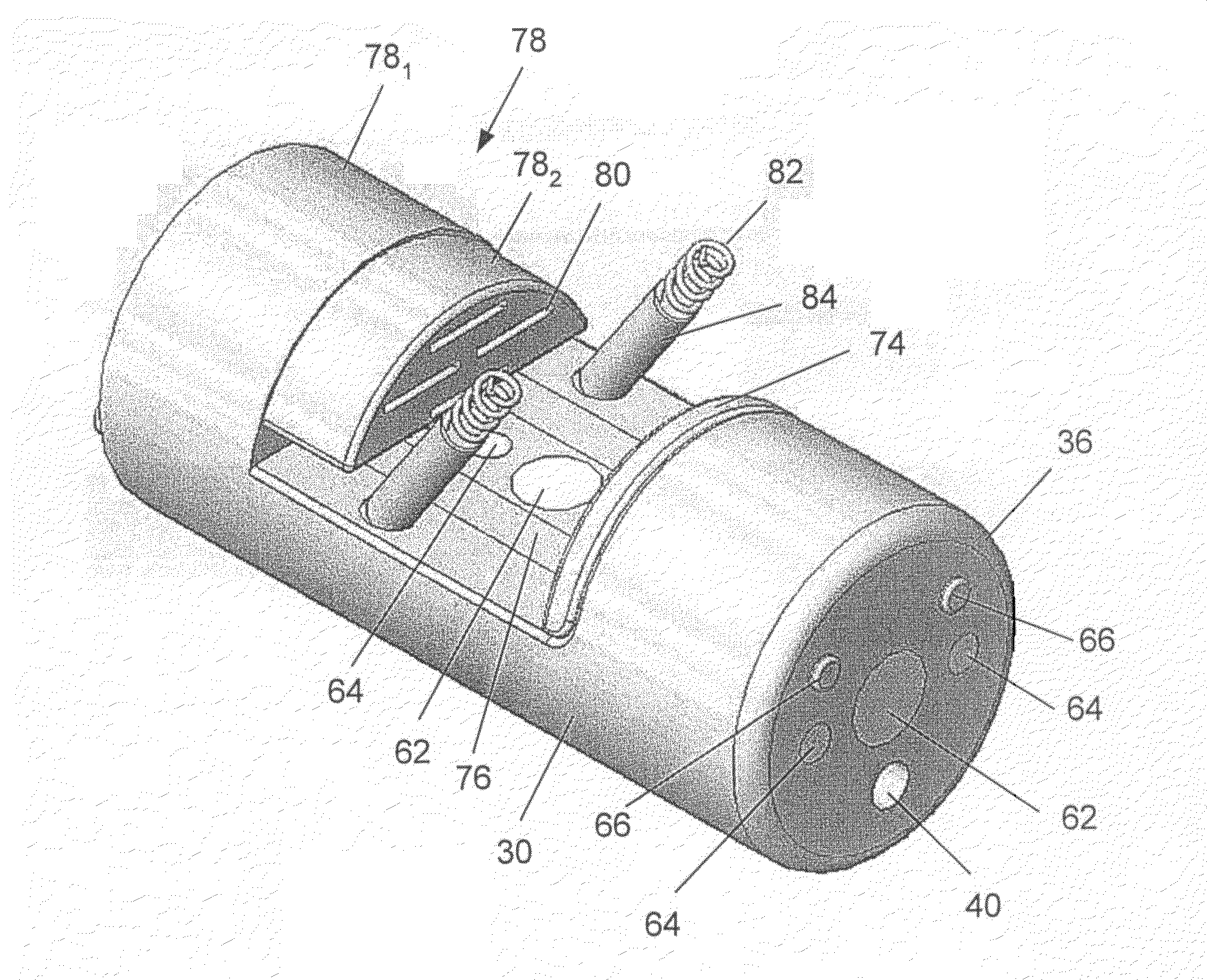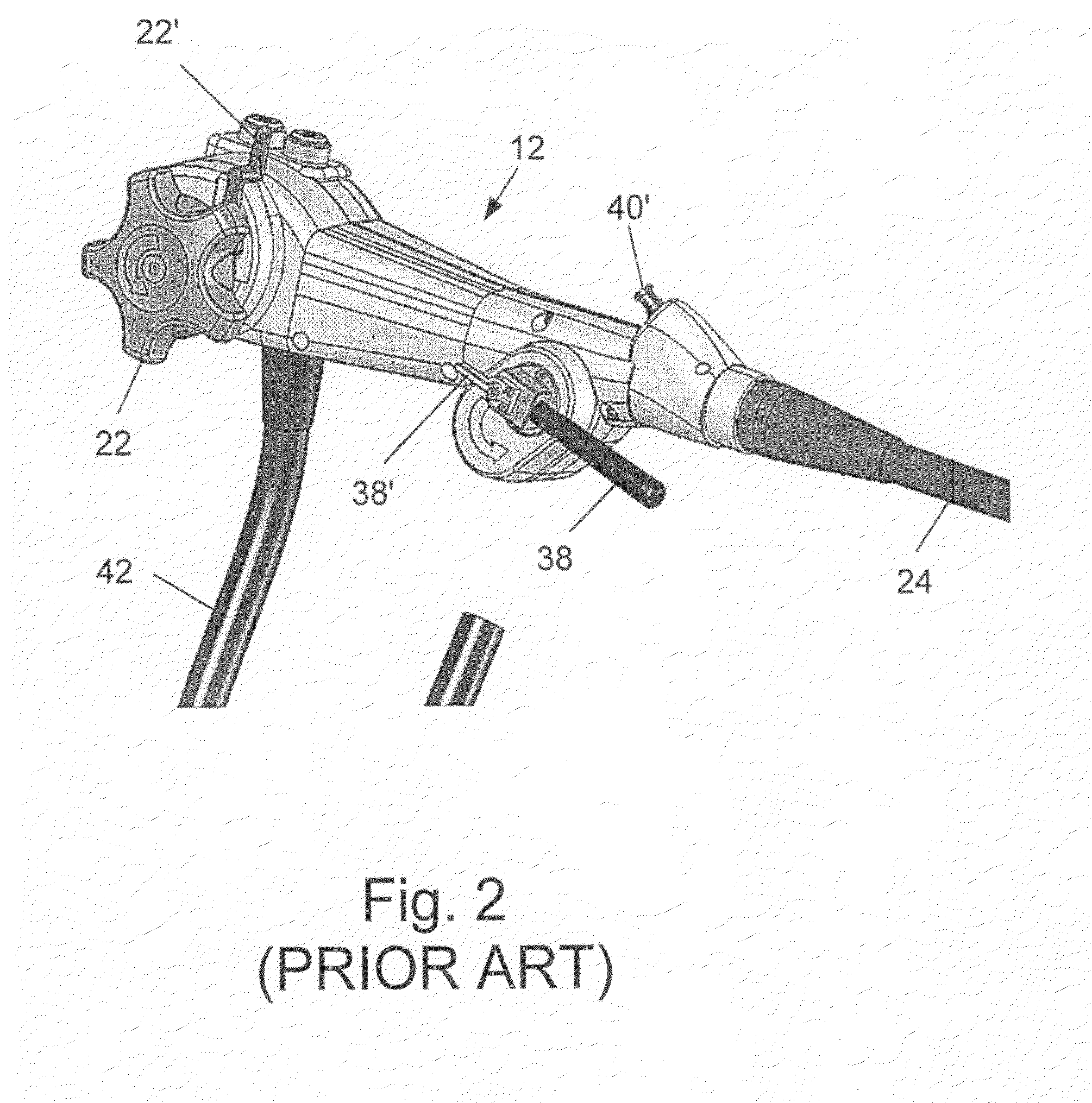Devices and methods for treating morbid obesity
a morbid obesity and endoscopic technology, applied in the field of medical devices, can solve the problems of increasing surgical risk, major health risk, and increasing prevalen
- Summary
- Abstract
- Description
- Claims
- Application Information
AI Technical Summary
Problems solved by technology
Method used
Image
Examples
— embodiment 2
Gastric Banding—Embodiment 2
[0117]A second embodiment of the invention is based on the use of the GERD endoscope and the method of using it to perform a fundoplication that is described in WO 01 / 067964. The steps of the method of inserting the gastric band are schematically shown in FIGS. 18A to 18G. The GERD endoscope 10 is first introduced through the esophagus 210 into the stomach 200 and bent so that the distal tip 30 engages the wall of the stomach 200 about at the location where the upper part of the greater curve 204 joins the fundus 202 (FIG. 18A) The articulation section 28 is bent further until the outer side of the stomach wall is folded back and pressed against the outer side of the cardia 213 (FIG. 18B). An array of staples 106 is fired to attach the walls to each other creating a full loop 2161. The endoscope 10 (now shown in the Fig) is then straightened, rotated about 180 degrees and bent and advanced until it contacts the stomach wall along the lesser curvature (FIG...
— embodiment 3
Gastric Banding—Embodiment 3
[0119]Most of the steps of the third embodiment are essentially the same as those of the second embodiment. The steps shown in FIG. 18A to FIG. 18F are identical. FIG. 19 is used to illustrate the final steps of the procedure. Referring now to FIG. 18F, when the articulation section of the endoscope is bent to bring the distal tip and the band close to the wall of the cardia, a cutting tool is passed through a working channel and is used to make a small hole in the lower part of the wall of the cardia 216. Grasping tools passed through the working channel of the endoscope are now used to pull the band out of the stomach through the hole and to wrap it around the outside of the cardia and join the ends of the band together. After the ends of the band are joined, the distal tip of the endoscope is now positioned at the wall of the stomach. A cutting tool is introduced through one of the working channels and a hole made in the stomach wall. The endoscope is ...
PUM
 Login to View More
Login to View More Abstract
Description
Claims
Application Information
 Login to View More
Login to View More - R&D
- Intellectual Property
- Life Sciences
- Materials
- Tech Scout
- Unparalleled Data Quality
- Higher Quality Content
- 60% Fewer Hallucinations
Browse by: Latest US Patents, China's latest patents, Technical Efficacy Thesaurus, Application Domain, Technology Topic, Popular Technical Reports.
© 2025 PatSnap. All rights reserved.Legal|Privacy policy|Modern Slavery Act Transparency Statement|Sitemap|About US| Contact US: help@patsnap.com



